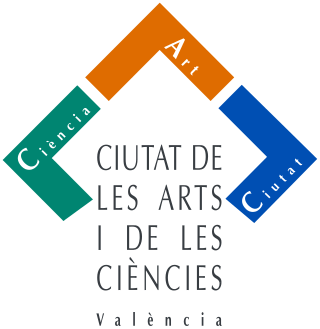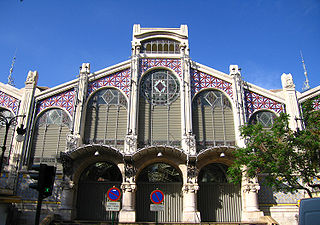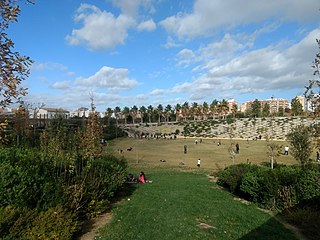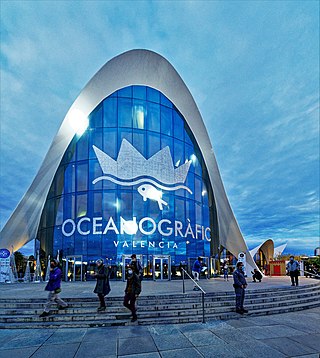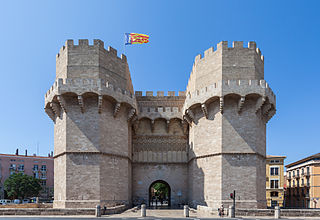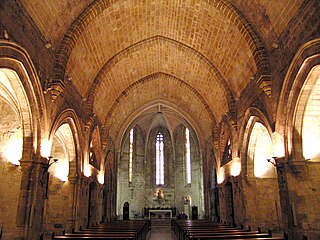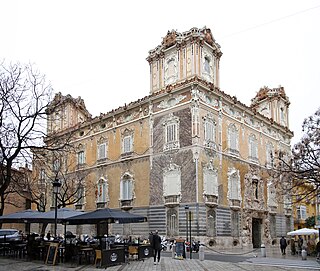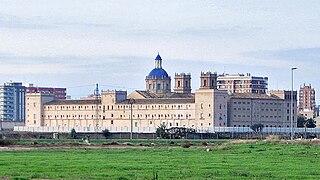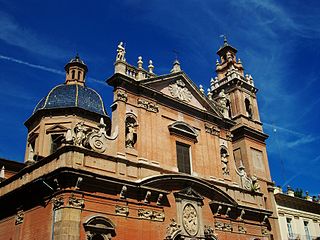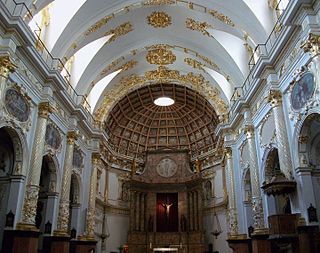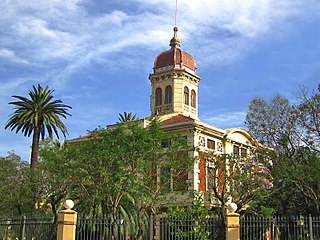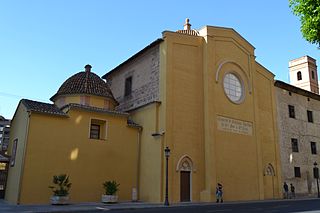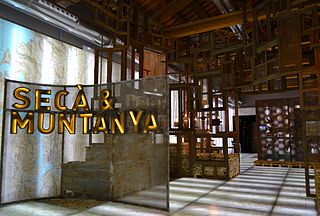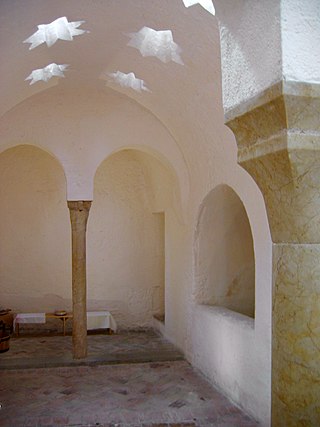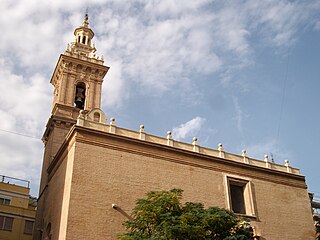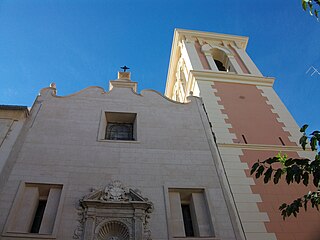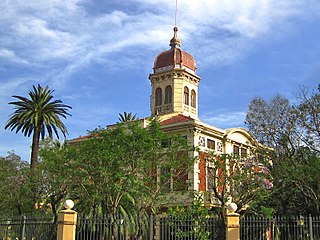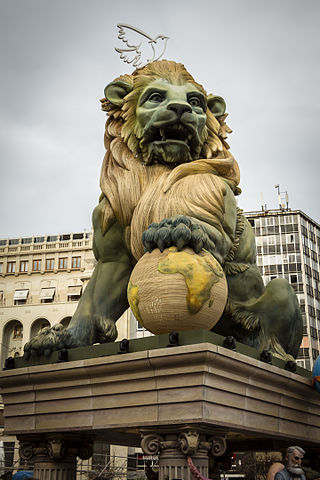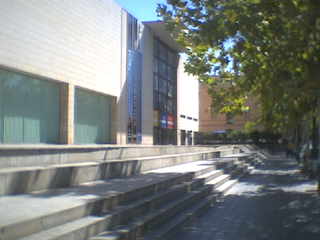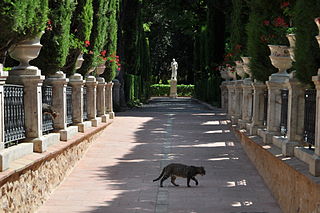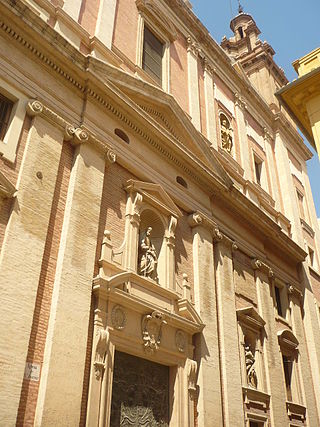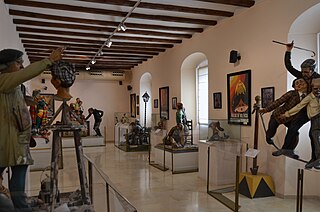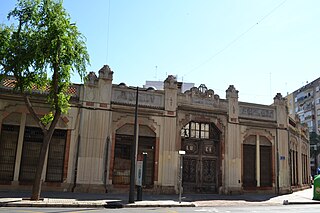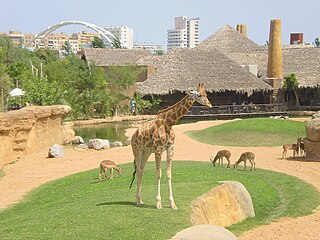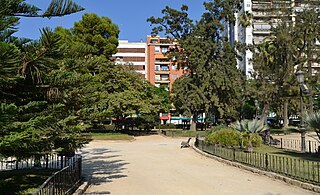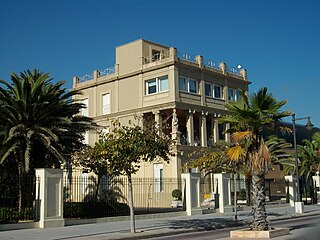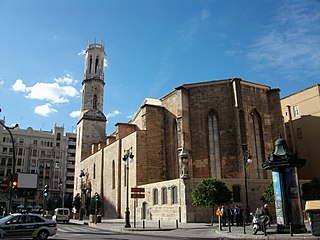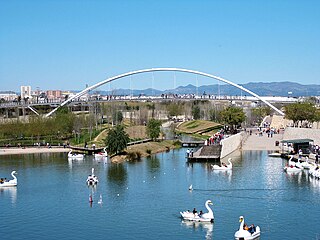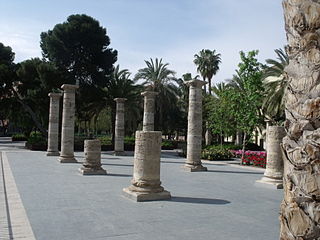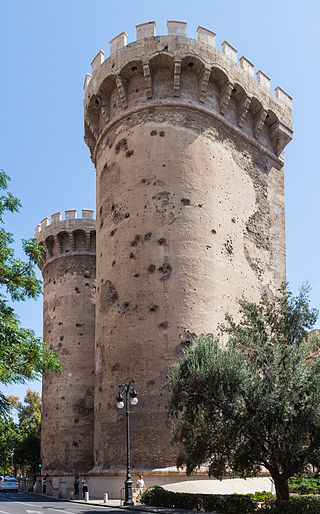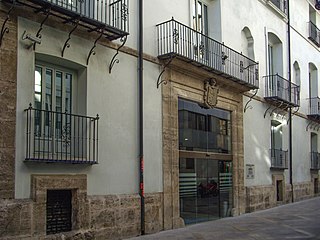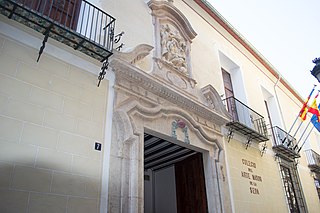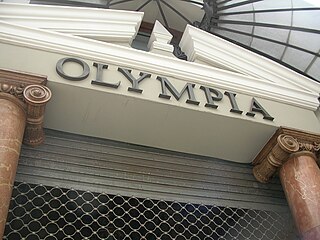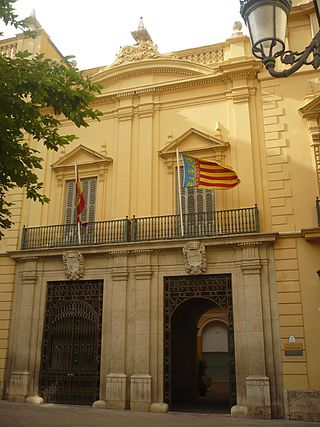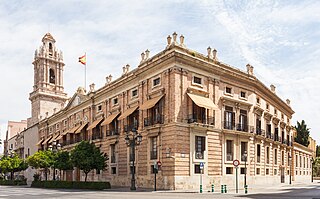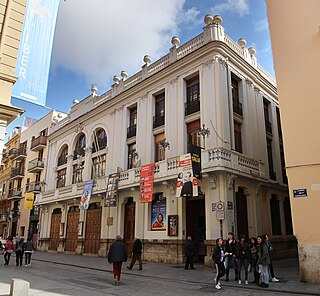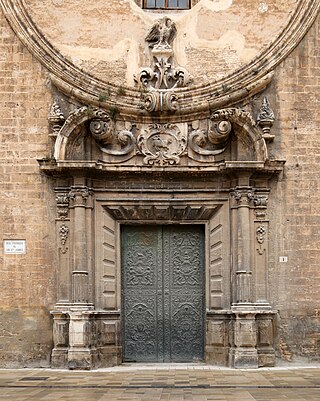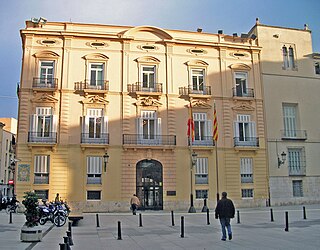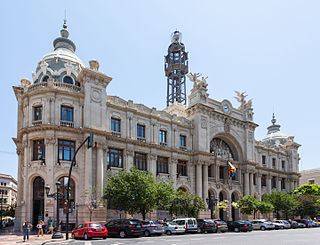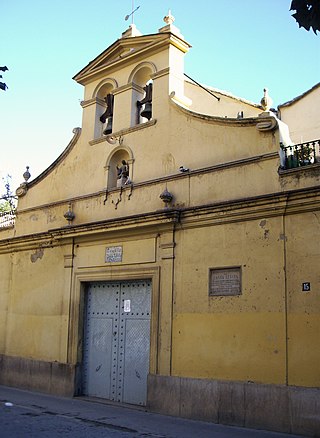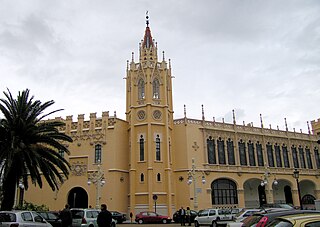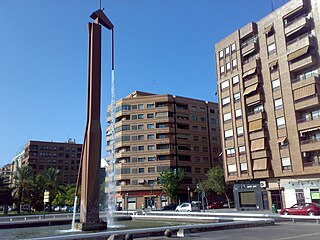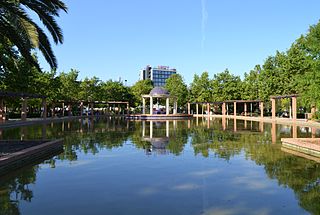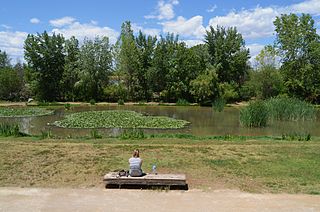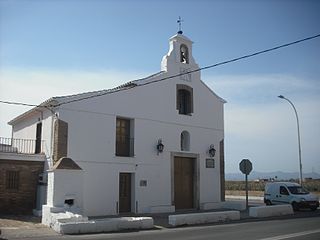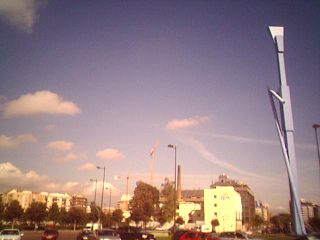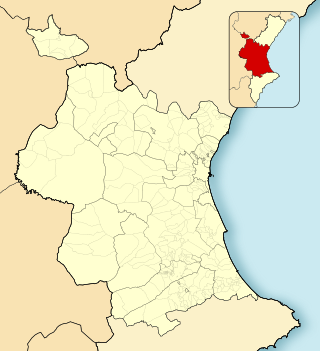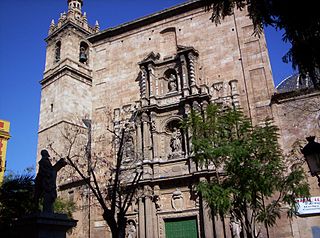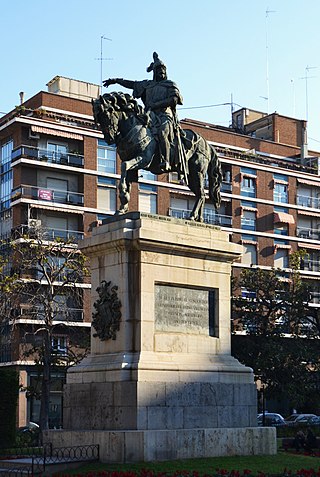56 Sights in Valencia, Spain (with Map and Images)
Legend
Premium Sights
Book tickets, guided tours and activities in Valencia.
Guided Free Walking Tours
Book free guided walking tours in Valencia.
Welcome to your journey through the most beautiful sights in Valencia, Spain! Whether you want to discover the city's historical treasures or experience its modern highlights, you'll find everything your heart desires here. Be inspired by our selection and plan your unforgettable adventure in Valencia. Dive into the diversity of this fascinating city and discover everything it has to offer.
Sightseeing Tours in ValenciaActivities in Valencia1. Ciutat de les Arts i les Ciències
The City of Arts and Sciences is a cultural and architectural complex in the city of Valencia, Spain. It is the most important modern tourist destination in the city of Valencia and one of the 12 Treasures of Spain.
2. Central Market
Mercado Central or Mercat Central is a public market located across from the Llotja de la Seda and the Church of Santos Juanes in central Valencia, Spain. It is one of the main works of the Valencian Art Nouveau.
3. Parc Central
The Valencia Parque Central action constitutes, as a railway and urban operation, the most important project currently undertaken by the city of Valencia. From a railway point of view, Valencia is part of the network of Spanish cities connected by high-speed and, when this action is completed, it will have a greater capacity for commuter services. On the urban side, thanks to the burying of the railway, part of the city centre will be recovered with a new 244,000 m² park and new public facilities, also facilitating the integration of neighbourhoods now divided by the railway.
4. Reina Sofia Palace of the Arts

Palau de les Arts Reina Sofía is an opera house, performing arts centre, and urban landmark designed by Santiago Calatrava to anchor the northwest end of the City of Arts and Sciences in Valencia, Spain. It opened on 8 October 2005; its first opera staging was of Beethoven's Fidelio on 25 October 2006. Tenor and conductor Plácido Domingo has maintained a special relationship with the Palau since its founding and has established a young singers training program there.
5. Oceanogràfic of Valencia
L'Oceanogràfic is an oceanarium situated in the Garden of the Turia to the southeast of the city center of Valencia, Spain, where different marine habitats are represented. It was designed by the architect Félix Candela and the structural engineers Alberto Domingo and Carlos Lázaro. It is integrated inside the cultural complex known as the Ciutat de les Arts i de les Ciències. It was opened on 14 February 2003.
6. Torres dels Serrans
The Serrans Gate or Serranos Gate, also known as Serrans Towers or Serranos Towers is one of the twelve gates that formed part of the ancient city wall, the Christian Wall, of the city of Valencia, Spain. It was built in Valencian Gothic style at the end of the 14th century. Its name is probably due to its location in the northwest of the old city centre, making it the entry point for the royal road connecting Valencia with the comarca or district of Els Serrans as well as the entry point for the royal road to Barcelona, or because the majority of settlers near there in the time of James I of Aragon were from the area around Teruel, whose inhabitants were often called serrans by the Valencians. Alternatively, the gate may also have been named after an important family, the Serrans, who lived in a street with the same name.
7. Iglesia de San Juan del Hospital
The church of San Juan del Hospital, Cistercian Gothic with some Romanesque elements, is the oldest in the city of Valencia. Located inside a block bounded between the streets of La Mar, Sant Cristòfol, del Miracle and Trinquet de Cavallers, in the district of La Xerea, within the district of Ciutat Vella, its name is due to the Order of Saint John of the Hospital or Order of Malta. Since 1943, it has been a historical-artistic monument and since 1966 it has been directed by Opus Dei.
8. Palau del Marqués de Dos Aigües
The Palace of the Marquis of Dos Aguas is a Rococo nobility palace, historically important in the city. It is located in one of the most central locations in the city of Valencia (Spain). It is a stately mansion that was the property of the Marqueses of Dos Aguas and is currently owned by the Spanish State. It houses the González Martí National Museum of Ceramics and Decorative Arts.
9. Monestir de Sant Miquel dels Reis
The Monastery of San Miguel de los Reyes is a monastery located on the outskirts of the city of Valencia, in the Orriols neighborhood, district of Rascanya, a few meters from the milestone with Tavernes Blanques. It is the current headquarters of the Valencian Library.
10. Iglesia de Santo Tomas Apostol y San Felipe Neri
The Church of St. Thomas the Apostle and St. Philip Neri is a temple built in the eighteenth century in the Baroque style in the Plaza de San Vicente Ferrer in the city of Valencia. This church is also called the church of the Congregation, because it was part of the convent house erected by the Oratonian congregation of San Felipe Neri, to which the old parish church of San Tomas was later added. It has been declared an Asset of Cultural Interest.
11. Església de Sant Martí
The church of San Martín, by San Martín Bisbe and San Antonio Abad, is one of the oldest in the city of Valencia, located at the beginning of San Vicente Street. Its origin can be found in the conquest of the city by James I, being in principle a mosque consecrated to Catholic worship.
12. Jardins d'Aiora
The Palace and Garden of Ayora is a complex formed by a recreational villa and the garden area that is around it, which is located in the neighborhood of Ayora, belonging to the district of Camins al Grao in the city of Valencia. The gardens and the palace have several accesses through different streets, the access to the palace would be through the street of the Saints Justo and Pastor and the accesses to the gardens and other facilities that complete the complex, through the streets of Industria, Jeroni de Montsoriu and Humanista Furió.
13. Iglesia Parroquial de Cristo Rey
The church of San Vicente de la Roqueta, today called Cristo Rey, is a Roman Catholic church located in the city of Valencia (Spain). The early church was built on a rock mound where, according to tradition, a martyrium had been built over the tomb of the deacon and martyr Vincent. This saint was martyred in Valencia at the beginning of the fourth century, and his remains were hidden and much later buried in this place, which at that time was outside the walls of late Roman Valencia, and next to the ancient Via Augusta that crossed the city. The remains of the martyr were venerated here for centuries.
14. L'ETNO - Museu Valencià d'Etnologia
The Valencian Museum of Ethnology is a museum located in the city of Valencia, mediterranean Spain. The museum mission defines it as cultural institution primarily devoted to collect, research and communicate the tangible and intangible heritage related to traditional and popular Valencian culture. The mission underlines that the museum also aims to permanently question fundamental aspects of the culture, as the dynamics that built it and force it to evolve, as well as its diversity. Although fundamentally devoted to Valencian cultural identity within a Mediterranean context, this museum also works to give visitors the chance to understand the challenges and dynamics of culture as a whole and from a contemporary perspective.
15. Banys de l'Almirall
The Admiral's Baths is a building in the neighborhood of La Xerea, district of the Old Town of Valencia near the Palace of the Admiral of Aragon, of Islamic architecture, built in the thirteenth century and used until the twentieth. The Admiral's Bath is a humble bathing building that serves to learn how the daily life of the less favored classes of the city of Valencia worked. Sociability developed between women and men, sexes who met on different days or at different times. Bathing was an exercise in practical hygiene and allows us to learn about the social relations of each of the periods.
16. Sant Joan de la Creu
The church of Sant Joan de la Creu was founded after the Christian conquest of the city, and was built on the site of a mosque. It is in the neighborhood of La Xerea, with the façade on Calle del Poeta Querol and between Vilaragut, Pròcida and Sant Andreu streets in the city of Valencia, Valencian Country.
17. Església del Pilar
The Church of the Pillar, or Church of Our Lady of the Pillar and Saint Lawrence is the church of the old Dominican convent of the same name, and is mainly what remains of it. It is located in the neighborhood of Velluters or El Pilar, the name it receives for the old convent. More precisely, it is located between Guillem de Castro Street, Maldonado Street and Plaza del Pilar, in the city of Valencia.
18. Palauet d'Aiora
The palace of Ayora and its garden called Jardí d'Ayora, is an architectural complex located between Calle de los Sants Just i Pastor and Calle de Jeroni de Monsoriu, in the neighborhood of Ayora, and bordering the neighborhood of Algirós, in the city of Valencia. Today the garden is a public park and the palace is a nursery school. On the eastern edge is the Ayora underground metro station. Above this station there is a garden area that is also considered part of the Ayora garden.
19. Falla de l'Ajuntament
The Falla of the Plaza del Ayuntamiento de Valencia, also referred to as Falla Plaza del Caudillo or Falla del País Valencià, as the name of the square where it is planted has changed, is the falla that is planted by the Valencia City Council. Although, voluntarily, there are fallas that decide not to participate in the scoring system of the Junta Central Fallera, this is the only one that is always out of the competition. It is considered that the first falla is the one planted in 1942, with the So Quelo as the protagonist of the auction, although, as in most fallas, there are precedents of fallas planted in the nineteenth century.
20. Valencian Institute of Modern Art
The Institut Valencià d'Art Modern, also known by the acronym IVAM, was the first center of modern art created in Spain, opening in 1989 in the city of Valencia. The Institut Valencià d'Art Modern is an important center for modern and contemporary art in Spain and Europe. Nuria Enguita Mayo was the Director of the museum between September 2020 and February 2024.
21. Jardí de Monforte
The Monforte Garden, also known as Romero's orchard, is an ornamental garden in the city of Valencia, located in the Exhibition district, between Calle de Montfort, Plaza de la Legion Española and the Quirón clinic.
22. Iglesia de las Escuelas Pías
The church of the Pious Schools located on Carniceros Street in Valencia (Spain) was built in the eighteenth century in Baroque style and is a representative example of the architectural moment that the city of Valencia experienced in the last third of the eighteenth century.
23. Museu Faller
The current Fallas Museum of Valencia has been installed since 1971 in the old Convent of the Mission House of San Vicente de Paül, which was completed in 1831, which is why it retains part of a structure of corridors and old cells. Later it had multiple uses, as a prison, barracks or warehouse. The Fallas Museum was rehabilitated and restructured in the early nineties of the twentieth century, being reopened in 1995. In 2016 the Fallas Museum was approved as an official Museum of the Generalitat Valenciana, being again restructured in its museological and museographic approaches. One of the novelties of this restructuring was the launch of the Josep Alarte temporary exhibition hall, dedicated to anthological exhibitions of the work of Fallas artists.
24. Alqueria dels Moros
La Alquería del Moro, a rural residential building located in the municipality of Valencia, in the Province of Valencia, on the old road to Burjasot. It is a residential building compendium of the stately and rural architecture of the Valencian orchards of the fourteenth, sixteenth and eighteenth centuries.
25. Consell Valencià de Cultura
The Valencian Council of Culture (CVC) is a consultative and advisory institution of the Generalitat Valenciana in specific matters related to Valencian culture, with the mission of ensuring the defense and promotion of the linguistic and cultural values of the Community. It is made up of 21 members appointed at the proposal of the different political parties represented in the Valencian Parliament.
26. Bombas Gens Centre d'Art
Bombas Gens Art Center is the art center of the Per Amor a l'Art Foundation. Inaugurated on July 7, 2017, it houses exhibitions and activities in the old factory of Hydraulic Pumps Carlos Gens SL, restored by the architect Ramón Esteve Cambra.
27. Bioparc València
Bioparc Valencia is a 10-hectare (25-acre) zoo park in Valencia, Spain. The zoo is owned by the City Council of Valencia and designed and managed by Rainforest. It has a large collection of African fauna.
28. Jardins de la Glorieta
The Glorieta Gardens, known simply as the Glorieta, are gardens in the city of Valencia, located in the neighborhood of La Xerea, in the district of Ciutat Vella. It is bounded by the streets of General Tovar, General Palanca, by the Plaza de la Puerta del Mar to the east and to the south by the Plaza de Alfonso the Magnanimous and the Palace of Justice.
29. Casa-Museo Blasco Ibañez
The Blasco Ibáñez House Museum is the current name, after its reconstruction, of the house of the Valencian writer Vicente Blasco Ibáñez, which is located at one end of the Malvarrosa beach in the city of Valencia, declared a Historic-Artistic Monument and recognized as an Asset of Cultural Interest (RI-51-0004451), with the name by which it is known in Valencia, Villa by Vicente Blasco Ibáñez.
30. Església de Sant Agustí i Santa Caterina
The parish church of Santa Catalina y San Agustín, located at 5 Mare de Deu de Gràcia street in the city of Valencia, Spain, is the church of the former convent of hermit friars of San Agustín who settled in Valencia in the thirteenth century.
Wikipedia: Iglesia de Santa Catalina y San Agustín (ES), Website
31. Parc de Capçalera
The Parque de Capçalera or Parque de la Capçalera is a municipal park in the city of Valencia, located at the western end of the municipality, in the neighborhoods of Sant Pau and Campanar. To the west it borders with Mislata, and to the south with the neighborhood of Soternes; To the east, it faces the architectural barrier of Avenida de Pío Baroja. It occupies the part of the old bed of the Turia River between its diversion to the new Turia riverbed, which runs south of Valencia, and the beginning of the Turia Garden, at the Nou d'Octubre bridge: the head of the river within the municipality. The park, completed in 2008, is one of the largest in the city.
32. Parc de la Cultura
Hospital Park is a municipal garden in Valencia, in the Sant Francesc neighbourhood of Ciutat Vella. It occupies an area of just over 22,000 m² and is protected as an Asset of Cultural Interest (BIC) in the complex of the Hospital Vell and the Hermitage of Santa Llúcia, two historic buildings that are part of the park. In addition, we can also find the Valencian Museum of Illustration and Modernity (MuVIM).
33. Torres de Quart
The Torres de Quart or Puerta de Quart is one of the two remaining gates of the old Valencia city wall. It was built between 1441 and 1493. It was still in use during the Peninsular War when it was marked by cannonballs and musket shots.
34. Palau dels Boïl d'Arenós
The Boïl d'Arenós palace, also known as the House of the Lord of Bétera, located at Calle de los Llibrers, 2 in the Xerea neighborhood of Ciutat Vella in Valencia, is a building declared an asset of cultural interest, built on a corner plot owned by the Boïl family. It follows the typology of Valencian medieval palaces but refined and revised by later customs and traditions.
35. Col·legi de l'Art Major de la Seda
The College of High Silk Art, located in Carrer de l'Hospital, núm. 7 of the city of Valencia, is a building built in the fifteenth century and was renovated in the sixteenth and seventeenth centuries in Baroque style. It has been declared an Asset of Cultural Interest.
Wikipedia: Col·legi de l'Art Major de la Seda (València) (CA)
36. Olympia
The Olympia building and theatre is located at number 44 Calle de San Vicente in the city of Valencia. It is a multi-family residential building built in 1915 by the architect Vicente Rodríguez Martín.
37. Palau del marques de campo
The Palace of the Marquis of Campo or of the Berbedel is located in the Plaza del Arquebisbe n. 3 in the city of Valencia. It is a residential building built in the seventeenth century, with works carried out in the nineteenth century. It houses the City Museum.
38. Convent de Sant Doménec
The Convent of Santo Domingo was a convent of the Dominican Order in the city of Valencia, Spain. Construction of the church began on land granted by King James I of Aragon in 1239, but it was subsequently replaced by a larger structure in 1250. The building went through renovations and expansions during different periods in history, hence it is home to Renaissance, Neoclassical, Valencian Gothic and Baroque styles of architecture. It was classified as a Bien de Interés Cultural in 1931, and is now used as a Spanish Army headquarters.
39. Teatre Talia
The Talia Theater in Valencia is located at number 31 Calle de los Cavalleros in the capital of the Turia. The building, owned by the Casa dels Obrers de San Vicente Ferrer, has 100 years of history. By virtue of an agreement, the space has been managed since 1992 by Teatres de la Generalitat Valenciana. The hall has 243 fixed seats, 62 boxes on the first floor, 48 amphitheatre seats and 36 boxes on the second floor.
40. Royal Parish of the St Johns
The Church of Santos Juanes or Sant Joan del Mercat is a Catholic church located in the Mercat neighborhood of the city of Valencia, Spain. The church is also denominated the Real Parroquia de los Santos Juanes or San Juan del Mercado due to its location adjacent to the city Central Market and facing the Llotja de la Seda building.
41. Palau de la Batlia
The palace of the Batlia, or of the Jàudenes, is located in the Plaza de Manises in Valencia, in the neighborhood of La Seu. It is the headquarters of the Provincial Council of Valencia. It was declared a Historic-Artistic Monument in 1962.
42. Edificio de Correos
The Edificio de Correos or Palacio de correos y telégrafos de Valencia is a building located in the Plaza del Ayuntamiento. It was built between 1915 and 1922 and inaugurated in 1923, where the old fishermen's quarter was partly located, with Las Barcas Street as a close witness. It was subsidized by Maura's government for the modernization of postal services in Spain.
43. Capella de l'Antic Col·legi de Sant Pau
The chapel of the old San Pablo school in the city of Valencia (Spain) is located on Xàtiva Street and was built between the seventeenth and eighteenth centuries. It is located within the current Lluís Vives Institute.
44. Ermita de Santa Llúcia
The hermitage of Santa Lucía, together with the grounds of the Old Hospital, was declared a National Historic-Artistic Monument in 1963 and an Asset of Cultural Interest in 2007, with the ministerial annotation number: R-I-51-0012195, and the date of annotation was November 28, 1963. It is located in the city of Valencia, on Calle del Hospital.
45. Palau de l'Exposició
The exhibition palace is a municipal building in the city of Valencia, located on Galicia Street no. 1. It was built in 1908 by the architect Francesc Mora i Berenguer following the Valencian modernist style and the neo -Gothic.
46. Fuente Pública
The Public Fountain popularly known as the Pink Panther, due to its shape and colour, is a monument located at the intersection of Ausiàs March Avenue and Peris i Valero Avenue, south of the city of Valencia. It was designed by the Valencian architect Miquel Navarro and erected in 1984. It commemorates the Túria-Júcar canal.
47. Parc d'Orriols
The Orriols Municipal Park or Orriols Garden is a public park in Valencia located in the north of the city, in the Orriols neighborhood and near the San Lorenzo neighborhood. It takes the shape of an inverted L. It is located next to the City of Valencia stadium and close to Calle de Alfauir. It is served by tram line 6 that stops at the Estadi del Llevant station. It is surrounded by Carrer de Santiago Rusiñol to the north, Carrer de la Beata Genoveva Torres to the east, Carrer de Sant Vicent de Paül to the west and Carrer de l'Arquitecte Tolsà to the south.
48. Teatre Principal de València
The Teatro Principal de València, meaning Main Theatre of València, is a theatre in Valencia, Spain. It is located in downtown Carrer de les Barques, close from the City Hall, as well as the Northern Station and the adjacent Bullring.
49. Parc de la Rambleta
La Rambleta Park is a municipal park in Valencia located in the south of the city, to the west of the Sant Marcel·lí neighbourhood. Approximately rectangular in shape, it is located between the aforementioned neighborhood and the General Cemetery. It is surrounded by Carrer de Pius IX to the east, the Camí Vell de Picassent to the west and Avinguda de Tomàs Sala to the north.
50. Ermita del Pilar
The hermitage of El Pilar is a temple located in the Valencian district of Les Cases de Bàrcena. It is an Asset of Local Relevance with identifier number 46.13.074-004. It was built in the mid-eighteenth century, completely whitewashed and with a gable roof that covers the hermit's house attached to one side. It preserves the well and the trough next to the road used by the horses in the past.
51. El Parotet
The Parotet is a well-known monument located in the roundabout of Europe, east of the city of Valencia, near the City of Arts and Sciences and the Tower of France. The name comes from its resemblance to the dragonfly insect.
52. Parc de Marxalenes
Marxalenes Park is a public park in Valencia, Spain, located in the north of the city, in the neighborhood of the same name, which belongs to the district of La Saïdia. Its realization was the result of the long claim of the Marxalenes Neighborhood Association of this area of the neighborhood, which qualified as a developable area was reclassified as a green area. Its total area is approximately 8 hectares between the streets of San Pancracio, Luis Crumiere, Poeta Fernández Heredia, Reus and Periodista Llorente. It is served by tram line 4 that stops at Marxalenes Station and Reus Station.
53. Parróquia de la Santísima Cruz
The Church of the Holy Cross, located in the Plaza del Carmen, is one of the most important religious buildings in Valencia, especially for its artistic richness both inside and outside. The building has had the title of National Historic-Artistic Monument since 1983 and is also considered an Asset of Cultural Interest of the city of Valencia.
54. Jaume I
Jaume I or the Monument to James I is an instance of public art in Valencia, Spain. The monument is topped by an equestrian bronze statue representing James I of Aragon, conqueror of Valencia in 1238 and founder of the Kingdom of Valencia.
55. Col·legi del Patriarca
The Royal College Seminary of Corpus Christi, also known as the College of the Patriarch, is a seminary founded in 1583 by Juan de Ribera, Archbishop and Viceroy of Valencia and Patriarch of Antioch, who three years later laid the first stone. It is located in the Plaza del Colegio del Patriarca, in the Xerea neighborhood of the city of Valencia.
Wikipedia: Reial Col·legi del Corpus Christi de València (CA)
56. La Dama Ibèrica
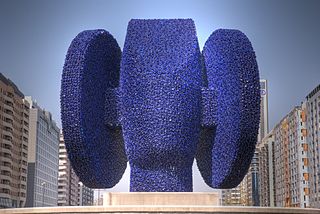
Dama Ibérica is the name given to a sculpture by the artist Manolo Valdés inaugurated in 2007 at the intersection of Avenida de las Cortes Valencianas and Calle la Safor in the Valencian district of Benicalap. The monument is a tribute to the Lady of Elche, is 18 m high and is made up of more than 20,000 small pieces in cobalt blue.
Share
Disclaimer Please be aware of your surroundings and do not enter private property. We are not liable for any damages that occur during the tours.
